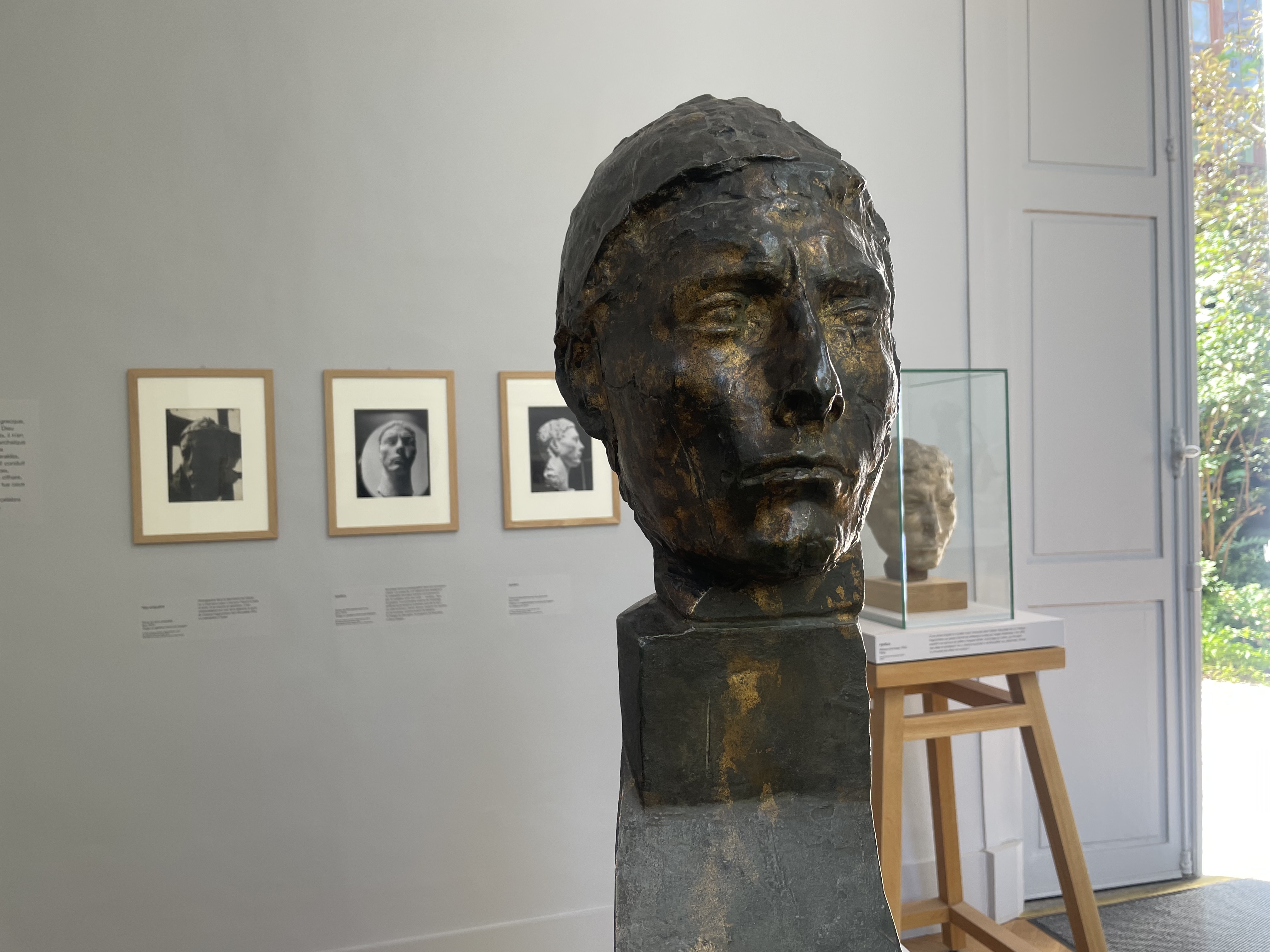Apollo: Free from all past
Started, dismissed, picked up again... Fighting Apollo is the final product of a long maturation process. It all started with the study of a young model "with a slim bony face", modelled around 1898. From this clay head found in 1900 in the studio, "all dried-up, cracked, unfinished", Bourdelle took an imprint that still displayed the marks of time. Based on this, looking for "the shape bayond blood or cartilage", he produced fragmentary masks in plaster -one copy of which he offered Rodin. He reworked the mask in clay and added a full massive neck.
Around 1909, Head of Apollo found its definitive architecture with the adjunction of bevelled base, a geometric -almost Cubist- plinth, and a face comprised of edges and interlocking planes. Bourdelle broke free from Rodin's influence and signed a modern manifesto. Sculptors Germaine Richier and Jean Arp understood its significance.
Around 1912, plaster copies of Head of Apollo were gifted to Elie Faure and André Gide. Bourdelle then cast it in bronze and exhibited it in 1913 at the Armory Show's international modern art manifestation, in New York, and at the Venice Biennale in 1914. The same year, this masterpiece joined the collections of the Nationalmuseum of Sweden.
Fighting Apollo- the title came to Bourdelle in 1913. The fight of the sculptor wanting to achieve a "fittingly edgy" shape that would match Apollo's motto: "Nothing in excess."


don't miss any news from the Bourdelle Museum.
Subscribe to our monthly newsletter